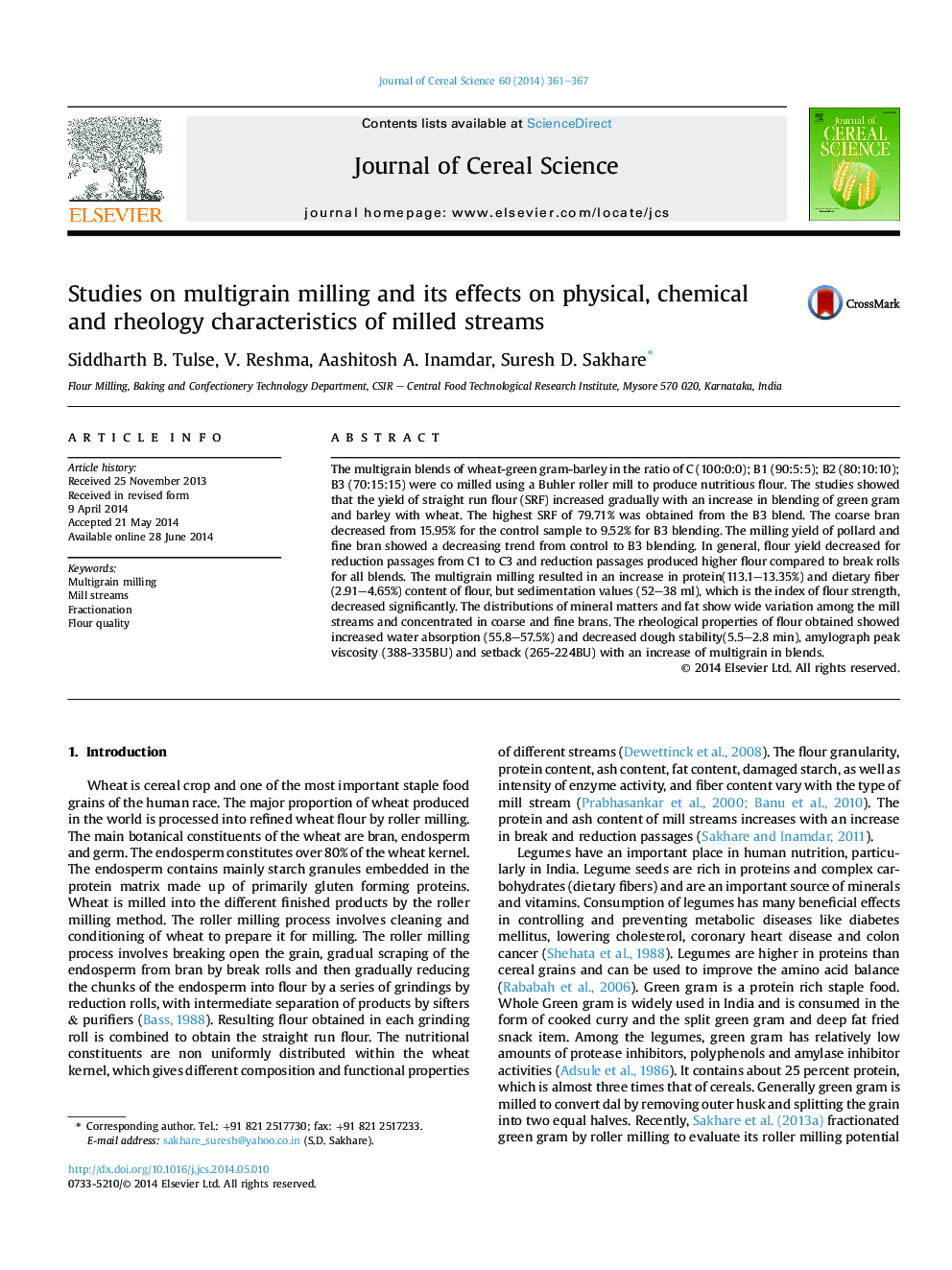| Article ID | Journal | Published Year | Pages | File Type |
|---|---|---|---|---|
| 4515851 | Journal of Cereal Science | 2014 | 7 Pages |
•The multigrain were co milled using roller mill to produce nutritious flour and bread.•Flour yield increased with increase in multigrain while nutrients distributions shown wide variation among mill streams.•Multigrain milling resulted into increase in protein and dietary fiber content of flour but sedimentation values decreased.•Farinograph water absorption increased and dough stability decreased with increase of multigrain in the blends.
The multigrain blends of wheat-green gram-barley in the ratio of C (100:0:0); B1 (90:5:5); B2 (80:10:10); B3 (70:15:15) were co milled using a Buhler roller mill to produce nutritious flour. The studies showed that the yield of straight run flour (SRF) increased gradually with an increase in blending of green gram and barley with wheat. The highest SRF of 79.71% was obtained from the B3 blend. The coarse bran decreased from 15.95% for the control sample to 9.52% for B3 blending. The milling yield of pollard and fine bran showed a decreasing trend from control to B3 blending. In general, flour yield decreased for reduction passages from C1 to C3 and reduction passages produced higher flour compared to break rolls for all blends. The multigrain milling resulted in an increase in protein(113.1–13.35%) and dietary fiber (2.91–4.65%) content of flour, but sedimentation values (52–38 ml), which is the index of flour strength, decreased significantly. The distributions of mineral matters and fat show wide variation among the mill streams and concentrated in coarse and fine brans. The rheological properties of flour obtained showed increased water absorption (55.8–57.5%) and decreased dough stability(5.5–2.8 min), amylograph peak viscosity (388-335BU) and setback (265-224BU) with an increase of multigrain in blends.
